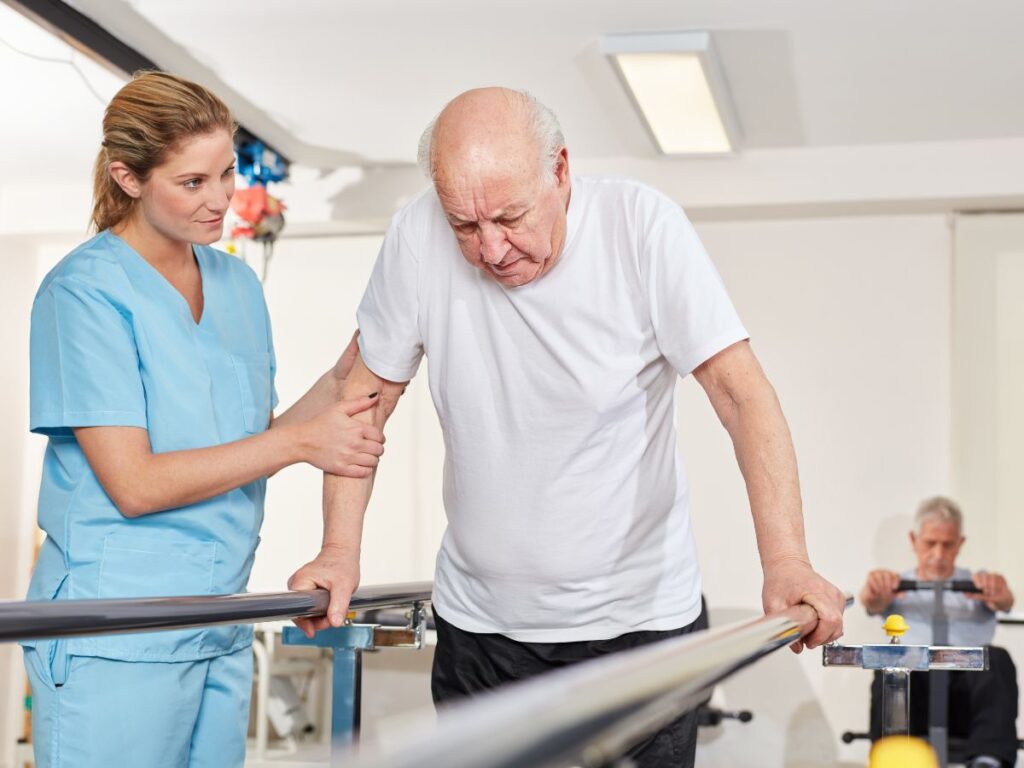Why Joint Replacement Recovery Can Be More Complex for Seniors
Knee or hip replacements often promise relief from crippling arthritic pain, yet older adults face distinct challenges in rehab—like weaker muscles, slower tissue regeneration, or balance deficits. Without a dedicated recovery plan, seniors risk extended downtime or incomplete function. Joint replacement rehab designed specifically for elderly patients addresses these nuances: by blending gentle stretching, structured strength exercises, and periodic evaluations from Dr. Elham to ensure proper alignment, older adults gradually restore mobility without overexertion. Ultimately, a thorough program prevents scarring, enhances muscle tone around the implant, and supports a stable gait. Freed from pre-op aches and potential post-op complications, seniors regain confidence in daily tasks—like climbing a few steps or standing for household chores—knowing their new joint supports them reliably.
Unique Post-Replacement Hurdles in Later Life
Chronic conditions like osteoporosis or spinal stenosis can slow healing or amplify pain after joint surgery. Muscle atrophy might already be advanced, demanding extra steps for re-strengthening. Fear of harming the fresh implant may lead seniors to avoid movement, ironically fostering stiffness or scar tissue. Rehab meets these head-on: safe load-bearing drills, cautious progression in walking routines, and Dr. Elham’s alignment checks neutralize potential strain. If upper spine subluxations hamper walking posture, gentle chiropractic manipulations release tension. This synergy spares the joint from undue stress, ensuring each day of healing cements the implant’s position with minimal friction or inflammation.
Core Aspects of Joint Replacement Rehab
A robust plan typically includes:
- Incision and Swelling Management: Early icing or compression to prevent fluid buildup that stiffens the implant area.
- Progressive Weight-Bearing: Carefully guided steps or partial loads that acclimate new joints without overwhelming them.
- Mobility and Range-of-Motion: Gentle flexion and extension exercises preventing scar adhesions and restoring normal bending or rotation.
- Strength Rebuilding: Resistance band exercises targeting hip or thigh muscles for knee replacements, or gluteal and core strengthening for hips.
- Alignment and Gait Checks: Dr. Elham’s subluxation corrections plus therapist-led gait training to establish symmetrical stride.
By layering these, seniors cultivate a stable environment for the prosthetic to adapt, reinstating the joint’s function for daily errands or personal grooming tasks that require bending or reaching.
Dr. Elham’s Support in Implant Recovery
If the spine or pelvis remains misaligned post-surgery, the new joint may endure uneven pressure, delaying healing or causing discomfort. Dr. Elham’s gentle evaluations detect these subtle subluxations—like a tilted sacrum—adjusting them to restore balanced weight distribution. If a knee implant is pressured by a misaligned hip, for instance, therapy gains might be undermined by persistent torque. By unifying chiropractic and PT approaches, seniors reinforce the joint’s correct mechanics at each rehab stage, lowering the chance of post-op complications like implant loosening or advanced wear. This integrative perspective maximizes comfort and longevity for the new joint.
Why Start Joint Rehab Early
While rest is crucial initially, prolonged inactivity fosters scar tissue and muscle atrophy around the implant, complicating recovery. Some seniors delay therapy due to fear of pain, ironically fueling stiffer joints and lengthier rehab timelines. By commencing safe mobilizations and mild strength moves early, older adults maintain joint flexibility and build supportive muscles. Dr. Elham’s subluxation checks prevent compensatory posture that can hamper the implant’s position. This approach shortens the window of intense discomfort and accelerates return to tasks—like ascending stairs or standing from chairs—enriching daily life soon after the procedure, rather than languishing in extended immobility.
Maintaining Gains Off the Rehab Floor
Therapists often provide home routines—like gentle seated knee bends or hip abduction exercises—to do daily. Monitoring swelling and applying ice or mild compression if needed wards off inflammation. Dr. Elham’s periodic checks ensure the pelvis or lumbar spine stays aligned as seniors practice walking or partial squats. Over time, these consistent micro-practices embed therapy gains into daily tasks—like stepping in and out of the shower—so progress doesn’t stall between formal sessions. Each success—like cooking a light meal standing steadily—reinforces confidence in the implant’s stability, fueling a self-sustaining cycle of movement that nurtures stronger muscles around the new joint.
Conquering Daily Activity Challenges
Joint replacement rehab arms seniors with practical strategies for tasks once made difficult by arthritic pain—like kneeling to reach lower cabinets or walking on uneven surfaces. Therapists simulate these in a controlled environment—coaching on pivoting with a new knee, or distributing weight evenly post-hip replacement. Dr. Elham’s alignment oversight keeps the spine from tipping posture mid-lift. As seniors master these motions, everyday chores no longer feel risky. Freed from that mental block of “What if the implant can’t handle this?” older adults reestablish autonomy, tackling personal care, modest housework, or short social outings without the overshadowing worry of joint instability.
Risks of Delaying or Skipping Rehab
Without structured therapy, scar tissue can bind the new joint, undermining the very reasons for surgery—lack of motion or persistent ache. Weak muscles might lead to a limp or reliance on canes. In some cases, implant loosening occurs if misalignments go uncorrected or repeated minor strains stress the prosthetic. Social isolation and depression can follow if fear of re-injury keeps seniors housebound. By contrast, steady rehab fosters balanced mechanics, stable gait, and confidence in the implant’s resilience, letting older adults rejoin community life with minimal constraints. Dr. Elham’s alignment checks also deter degenerative changes elsewhere in the spine that complicate the new joint’s function.
Typical Elderly Joint Rehab Session
Therapists begin by gauging incision healing, range-of-motion, and pain levels around the implant. Gentle warmups—like seated leg swings or arm circles if it’s a shoulder—promote blood flow. Dr. Elham may inspect spinal alignment, adjusting if subluxations hamper posture. Core exercises or band-resisted moves follow, building supportive strength around the replacement site—like quads for knees or glutes for hips. Balance tasks confirm safe stepping or turning. If swelling flares, icing or short rest helps. Over repeated sessions, motions progress from slight partial bends to deeper squats or moderate lifts, reflecting real-life chores. By program’s end, older adults typically experience significantly improved comfort, range, and confidence in their new joint.
Rediscovering an Active Life Post-Replacement
Joint replacement rehab for elderly patients prevents a dynamic new implant from stagnating under inadequate care. Through meticulously guided exercise, muscle reconditioning, and Dr. Elham’s alignment, each step of healing unfolds naturally. Freed from the bone-on-bone agonies that once defined daily life, seniors learn to trust the prosthetic’s strength—walking, bending, or standing with minimal hesitation. Sleep and mood often improve as pain diminishes. Ultimately, robust rehab cements the surgery’s success: older adults reclaim everyday freedoms—like strolling among friends or cooking for family—without the overshadowing fear of missteps or persistent, arthritic-like aches. Their renewed mobility stands as testament to the power of a well-tended joint replacement journey.






